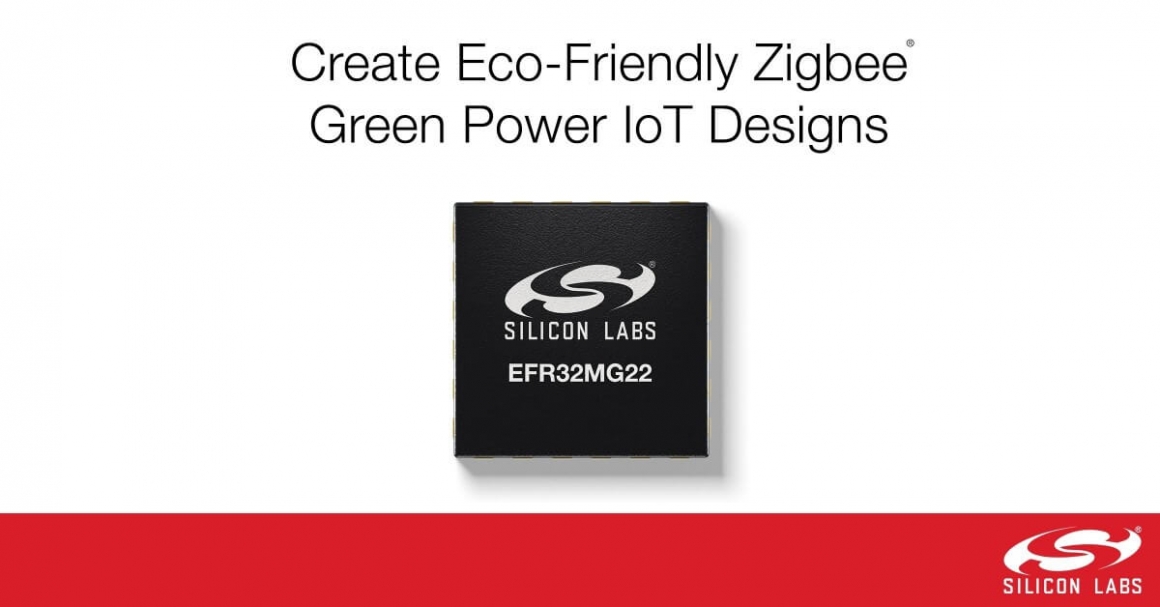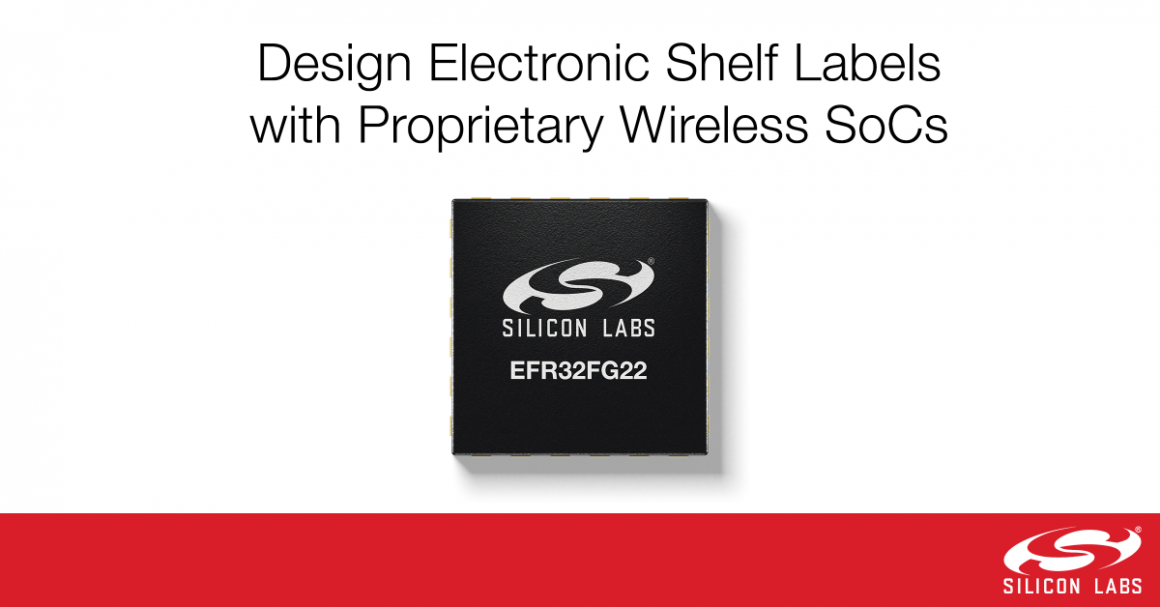EFR32BG22 Bluetooth LE SoC
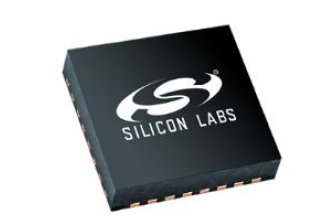
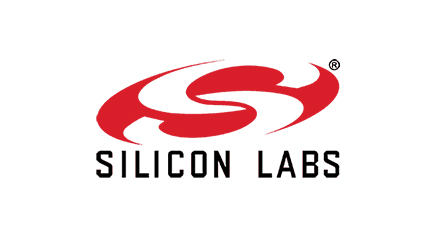
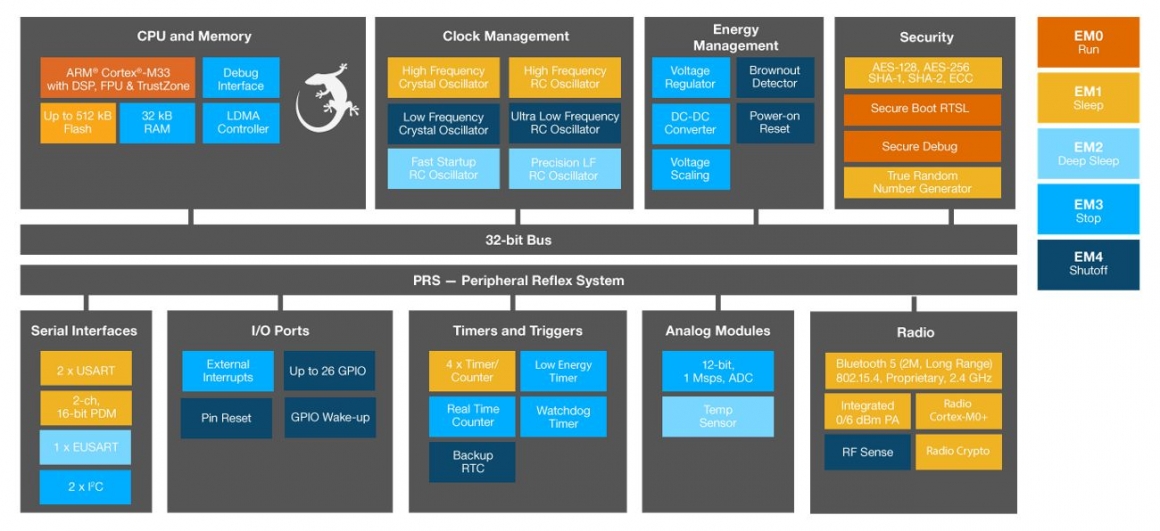
EFR32BG22 Series 2 Bluetooth® Wireless SoC
EFR32BG22 (BG22) Bluetooth low energy (LE) wireless SoC solutions are part of the Wireless Gecko Series 2 platform. The BG22 family's combination of best-in-class ultra-low transmit and receive power (4.1 mA TX at 0 dBm, 3.6 mA RX) and a high-performance, low-power Arm® Cortex®-M33 core (27 µA/MHz active, 1.2 µA sleep) delivers industry-leading energy efficiency that can extend coin cell battery life up to ten years. Target applications include Bluetooth mesh low-power nodes, smart door locks, personal healthcare and fitness devices. Asset tracking tags, beacons and indoor navigation also benefit from the SoCs' versatile Bluetooth Angle of Arrival (AoA) and Angle of Departure (AoD) capabilities and sub-one-meter location accuracy.
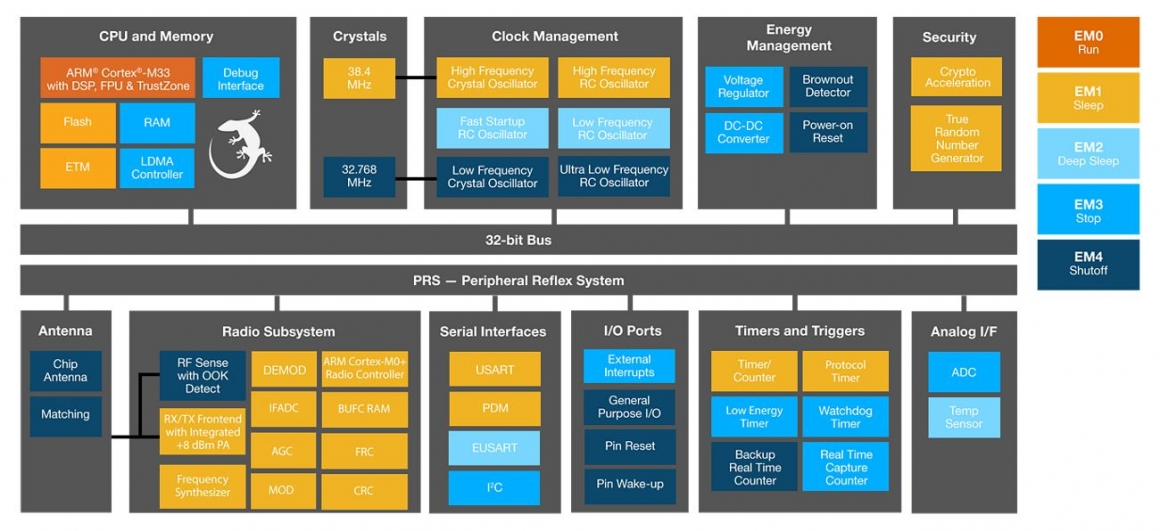
EFR32BG22 Series 2 Modules--BGM220
BGM220 Bluetooth® modules are designed and built to meet the performance, security, and reliability requirements of battery-powered IoT products. Based on the EFR32BG22 SoC, BGM220 is a full solution that comes with fully upgradeable, robust software stacks, world-wide regulatory certifications, advanced development and debugging tools, and support to help accelerate time-to-market. Available in multiple packages, PCB or ultra-compact SiP, BGM220 is ideal for a broad range of Bluetooth LE applications including asset tags, beacons, portable medical, fitness, and Bluetooth mesh low power nodes.
FEATURES

Automate
The EFR32BG22C224 SoC provides IQ sampling and access to 125 kB and 500 kB Bluetooth LE Coded PHYs, which can increase RX sensitivity to -106.7 dBm. The SoC increases operating temperature to +125 ºC and extends flash memory up to 512 kB to support applications requiring direction finding capabilities or low-power mesh nodes.
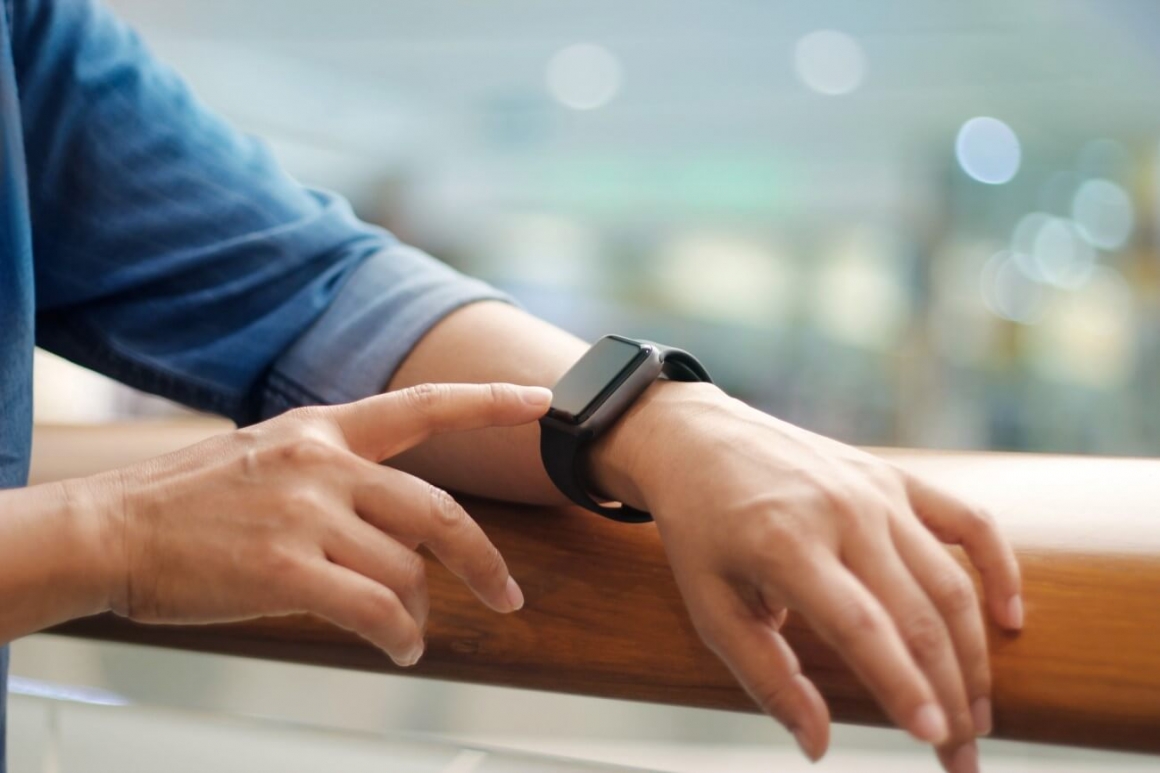
Connect
EFR32BG22C222 SoC targets applications requiring more compute power (with a 76.8 MHz M33 core), more I/Os (up to 26 GPIOs) and higher TX power (+6 dBm).

Locate
The EFR32BG22C112 SoC targets high-volume, cost-sensitive applications such as asset tracking tags by eliminating the need for an external sleep crystal. These SoCs provide access to 1 Mbps and 2 Mbps Bluetooth PHYs, along with a 38.4 MHz Arm® Cortex®-M33 core, 18 GPIOs and 352 kB of flash memory with radio characteristics of 0 dBm transmit (TX) and an industry-leading -99 dBm receive (RX) (1M PHY) sensitivity.
BG22 Security Features
IoT security is key to protecting company brands, end user privacy and commercial viability of products. Vulnerabilities can be exploited through both remote Internet attacks and physical hands-on-attacks.
Developers using the Silicon Labs wireless product portfolio including those in the EFR32BG22 portfolio have access to a number of technologies designed to protect their product, including Secure Boot with Root of Trust, Secure Loader and Secure Debug.

Bluetooth Workshops: BG22 Project Series
Join us on the 3rd Tuesday of every month and learn new ways to integrate Bluetooth connectivity into your next project with Silicon Labs expert engineers' help. Each project session will explore and solve challenges developers often face when building new Bluetooth designs.
Register Now
More Wireless Tech Talk
Bluetooth Direction Finding with BG22
Learn about our new direction finding solution targeting a wide range of indoor positioning, navigation, and asset and people tracking applications. The solution combines the Quuppa Intelligent Location System™ with Bluetooth LE asset tags using our best-in-class Bluetooth SoC devices including the new EFR32BG22 SoC.

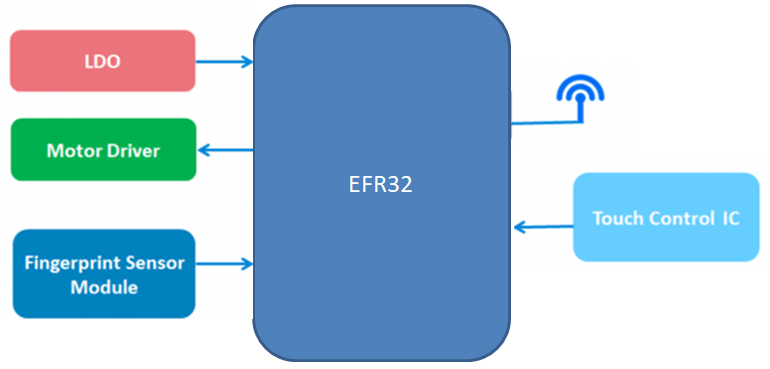
The rise of AI and 5G drive the developments of the smart home, which also greatly boosts the demand of the smart lock. A wide variety of smart lock technology including fingerprint recognition, face recognition, voice recognition, vein identification, etc. provide people with more choices and higher security standard. According to Strategy Analytics Research, the shipment of smart locks is estimated to be 26 million in 2023. The growth will be twice as much as in 2019. Except for household usage, more and more companies, schools, hospitals, hotels, and public institutions will introduce smart lock to satisfy users' pursuit of a smart and easy lifestyle.
Learn More
- High Performance 32-bit 76.8 MHz ARM Cortex®-M33 with DSP instruction and floating-point unit for efficient signal processing
- Up to 512 kB flash program memory
- Up to 32 kB RAM data memory
- 2.4 GHz radio operation
Radio Performance
- -106.7 dBm sensitivity @ 125 kbps GFSK
- -98.9 dBm sensitivity @ 1 Mbit/s GFSK
- -96.2 dBm sensitivity @ 2 Mbit/s GFSK
- TX power up to 6 dBm
- 2.5 mA radio receive current
- 3.4 mA radio transmit current @ 0 dBm output power
- 7.5 mA radio transmit current @ 6 dBm output power
Low System Energy Consumption
- 3.6 mA RX current (1 Mbps GFSK)
- 4.1 mA TX current @ 0 dBm output power
- 8.2 mA TX current @ 6 dBm output power
- 27 μA/MHz in Active Mode (EM0) at 76.8 MHz
- 1.40 μA EM2 DeepSleep current (32 kB RAM retention and RTC running from LFXO)
- 1.75 μA EM2 DeepSleep current (32 kB RAM retention and RTC running from a precision LFRCO)
- 0.17 μA EM4 current
- 12-bit 1 Msps SAR Analog to Digital Converter (ADC)
- Up to 26 General Purpose I/O pins with output state retention and asynchronous interrupts
- 8 Channel DMA Controller
- 12 Channel Peripheral Reflex System (PRS)
- 4 × 16-bit Timer/Counter with 3 Compare/Capture/PWM channels
- 1 × 32-bit Timer/Counter with 3 Compare/Capture/PWM channels
- 32-bit Real Time Counter
- 24-bit Low Energy Timer for waveform generation
- 1 × Watchdog Timer
- 2 × Universal Synchronous/Asynchronous Receiver/Transmitter (UART/SPI/SmartCard (ISO 7816)/IrDA/I2S)
- 1 × Enhanced Universal Asynchronous Receiver/Transmitter (EUART)
- 2 × I2C interface with SMBus support
- Digital microphone interface (PDM)
- Precision Low-Frequency RC Oscillator to replace 32 kHz sleep crystal
- RFSENSE with selective OOK mode
- Die temperature sensor with +/-1.5 °C accuracy after single-point calibration
- (G)FSK with fully configurable shaping
- OQPSK DSSS
- (G)MSK
Protocol Support
- Bluetooth Low Energy (Bluetooth 5.2)
- Direction finding using Angle-of-Arrival (AoA) and Angle-of-Departure (AoD)
- Proprietary
Wide Operation Range
- 1.71 V to 3.8 V single power supply
- -40 °C to 125 °C
Packages
- QFN40 5 mm × 5 mm × 0.85 mm
- QFN32 4 mm × 4 mm × 0.85 mm
- TQFN32 4 mm × 4 mm × 0.30 mm
- Bluetooth Low Energy (Bluetooth 5.2)
- Direction-finding
- Bluetooth mesh Low Power Node
Regulatory Certifications
- FCC
- CE
- IC/ISEDC
- MIC/TELEC
- KCC
Operating Range
- 1.8 V to 3.8 V, single supply
- -40 °C to +105 °C
Dimensions
- 12.9 mm x 15.0 mm x 2.2 mm
- 6 mm × 6 mm × 1.1 mm
- 2.4 GHz radio
- TX power up to +8 dBm
- High-performance 32-bit ARM Cortex-M33® with DSP instruction and floating-point unit for efficient signal processing
- Up to 512 kB flash program memory
- 32 kB RAM data memory
- Embedded Trace Macrocell (ETM) for advanced debugging
Current Consumption
- 4.3 mA RX current at 1 Mbps GFSK
- 4.8 mA TX current at 0 dBm output power
- 26 μA/MHz in Active Mode (EM0)
- 1.40 μA EM2 DeepSleep current (RTCC running from LFXO, Full RAM retention)
- Precision Low-Frequency RC Oscillator to replace 32 kHz sleep crystal
- 16-bit Analog to Digital Converter (ADC)
- 25 General Purpose I/O pins with output state retention and asynchronous interrupts
- 8 Channel DMA Controller
- 12 Channel Peripheral Reflex System (PRS)
- 4 × 16-bit Timer/Counter with 3 Compare/Capture/PWM channels
- 1 × 32-bit Timer/Counter with 3 Compare/Capture/PWM channels
- 32-bit Real Time Counter
- 24-bit Low Energy Timer for waveform generation
- 1 × Watchdog Timer
- 2 × Universal Synchronous/Asynchronous Receiver/Transmitter (UART/SPI/SmartCard (ISO 7816)/IrDA/I2S)
- 1 × Enhanced Universal Asynchronous Receiver/Transmitter (EUART)
- 2 × I2C interface with SMBus support
- Digital microphone interface (PDM)
- RFSENSE with selective OOK mode
BGM220 Bluetooth Module Explorer Kit
The BGM220 Explorer Kit is an ultra-low cost, small form factor development and evaluation platform for the BGM220P Bluetooth Module. The kit features a USB interface, an on-board SEGGER J-Link debugger, one user-LED and button, and support for hardware add-on boards via a mikroBus socket and a Qwiic connector. The hardware add-on support allows developers to create and prototype applications using a virtually endless combination of off-the-shelf boards from mikroE, sparkfun, AdaFruit, and Seeed Studios.
Specification
Small Form Factor Kit
- Aligned with breadboard dimensions
- BGM220PC22HNA
- Secure Bluetooth 5.2 module
- 76.8 MHz, ARM Cortex-M33 with 512 kB of flash and 32 kB RAM
- Bluetooth 5.2 Radio with supported for direction finding and LE coded PHY
- 38.4 MHz HFXO crystal
- 32.768 kHz LFXO crystal
- 2.4 GHz matching network and a chip antenna
On-board Board controller
- J-Link debugger
- SWD physical layer
- Packet trace over UART/async protocol
- Virtual COM with hardware flow control
USB Micro-B connector for debug connection
User interface features
- 1x button (with EM2 wake-up)
- 1x LED
- AEM
- PTI
- VCOM
- SWD
- mikroBus socket
- Qwiic connector
*Silicon Labs Authorized Distributor





